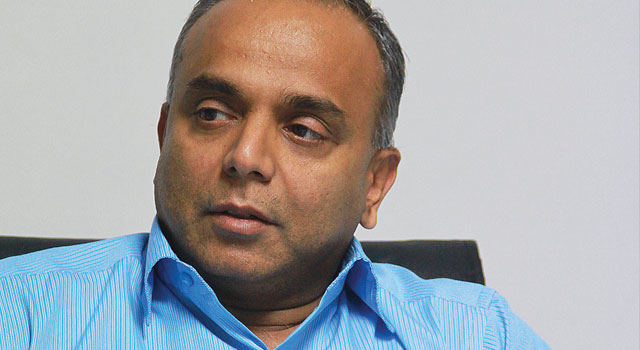Gazette Reporter
With a whopping P7.4 billion revenue for the year ended 30 June 2016, only P104 million was recorded as profit for the year, and that is just 1.4 percent of the total revenue made by the colossal retailer, Choppies Enterprises.
On the other hand, competitor, Sefalana Holdings with a total revenue of P3.8 billion (almost half of Choppies’) was more profitable at P157 million profit after tax for the year ended 30 April 2016. The Botswana Gazette reflects on how Choppies’s vigorous, yet touch-and-go expansion drive costs it millions, while Sefalana’s cautious execution could be more effective.
Headed by the steadfast businessman, Ramachandran Ottapathu, Choppies is in no doubt a monstrous venture. Its monstrosity is however reflected only in Botswana, despite years of operation in foreign markets, where the expectation was that more profits will flow. It appears, the company makes money here in Botswana, uses the money to fund expansions across the borders, only for those expansions to be loss making.
From the P7.4 billion revenue by Choppies, a bulky P4.5 billion of that came solely from Botswana, while South Africa made P1.5 billion followed by Zimbabwe at P1.2 billion. Zambia and Kenya made P40 8 million and P46.4 million respectively. Interestingly, or rather sadly, only Botswana operations made profit, while the rest are in the red. Only the Botswana operations were able to make P203 million as post tax profit. SA operations made P68 million in losses. Zimbabwe’s losses stood at P12.3 million while Zambia and Kenya made losses at P4.6 million and P13.1 million respectively.
Frankly, Choppies made a cumulative loss of around P100 million outside Botswana, operations which are funded using funds from Botswana operations. A tooth for tooth comparison with Choppies’s sworn enemy, and largest competitor Sefalana, reveals interesting things. During the same reporting period, Sefalana made more profits than Choppies, despite that Choppies, a P4.7 billion worth of an establishment by market capitalization is almost two times bigger than Sefalana. The latter is valued at P2.9 billion in market value, and it means the company is P1.8 billion less valuable than Choppies.
Under the command of Group Managing Director (MD) Chandra Chauhan, Sefalana proves to be more efficient from its smaller operations. From its P3.8 billion revenue, P157 million, was post tax profit, the money which could be enjoyed by shareholders in the form of dividends, and it was 66.2 percent higher than that made by Choppies, which is almost two times its size.
Sefalana also has foreign operations in Namibia and Zambia, but its MD said at a previous financial results announcement that he is not aroused by speedy expansions which may be risky, but he rather is cautions to achieve efficiency. His numbers prove so. Just like Choppies, Sefalana makes most of its cash in Botswana and then uses it to expand its regional footprint, but unlike Choppies, there is a little profit coming from outside, and its subsidiaries have not made losses.
During the 2016 reporting period, Choppies spent over P1.3 billion on administrative expenses, part of which is spent on foreign operations. The company operates 183 stores in five countries, being Kenya, Zimbabwe, Zambia, South Africa and
Botswana. The number of stores grew from 129, boosted by a fresh expansion to Zambia and Kenya, by five and eight stores respectively.
Sefalana on the other hand spent only P148 million as administration expenses, possibly because of its conservative approach.
Choppies has never made profit in SA, despite its continued expansion that has now brought its stores there to over 61. In Zimbabwe, P8.2 million was made in 2015, but was washed down to a P6.8 million, 12 months down the line. Independent analyst at Motswedi Securities, Moemedi Mosele said that Choppies’ problems are Zimbabwe and SA. In fact he says, Zimbabwe’s losses were a result of political pressure which disrupted Choppies operations. He spoke of the ban on imports, which meant Choppies could not move their in-house brands into Zimbabwe but are rather forced to look for suppliers in Zimbabwe.
“Currency translations and competition on the other hand weigh down on SA performance,” Mosele said. The Choppies CEO attests to that himself.
The continued devaluation of the Rand put downward pressure on prices and thus revenues.
He said the South African business, other than the newly acquired business, Jwayelani in the Eastern Cape and KwaZulu Natal (KZN), incurred significant losses occasioned by very depressed trading in areas dominated by mining.
“Focused management action has resulted in an improvement in sales and margins. While trading conditions remain challenging, early indications are that these actions will advance South Africa to improved results,” Ottapathu said.
Further, Ottapathu blames Zimbabwe losses on the depressed economic conditions, which have resulted in a shortage of cash in circulation, causing customer purchases per transaction to drop markedly.
Operations commenced in Zambia and Kenya with the opening of 5 and 8 stores, respectively, as well as establishing distribution facilities. “Our operations in these countries will remain loss making in Full Year (FY) 2017 as we continue to build our store base and invest in operational infrastructures,” he explained.
Choppies expects to commence operations in Tanzania and Mozambique in the coming months. The group plans to roll out more than 20 stores in all regions by the close of FY2017, which means more money will be splashed on those expansions.

